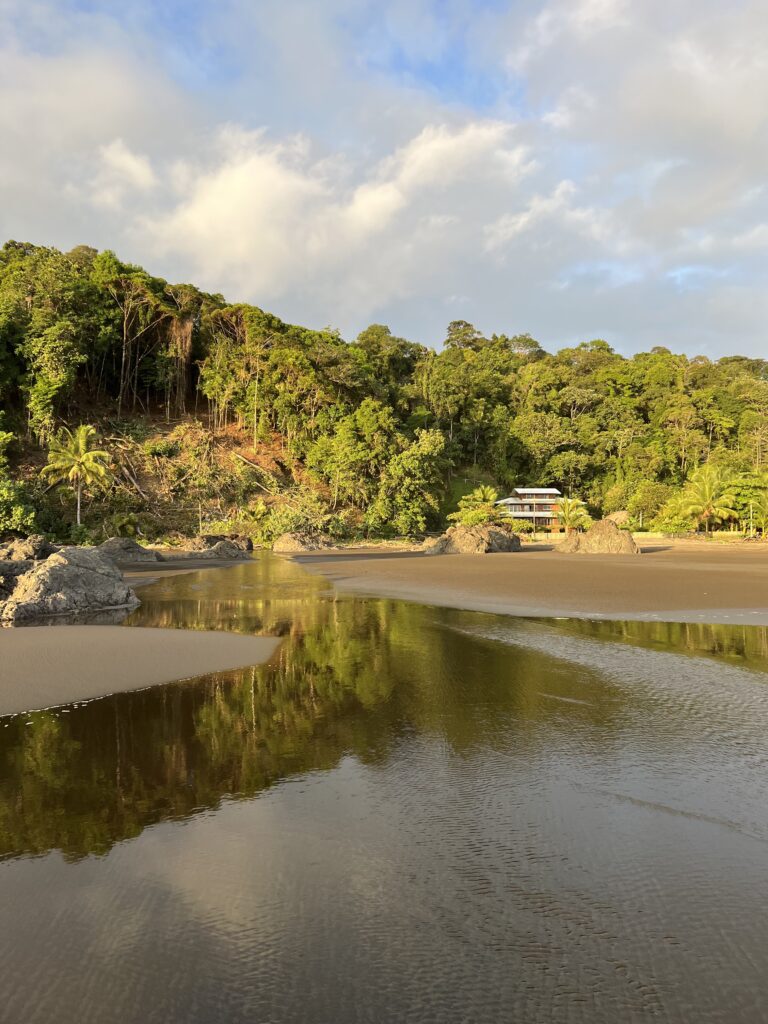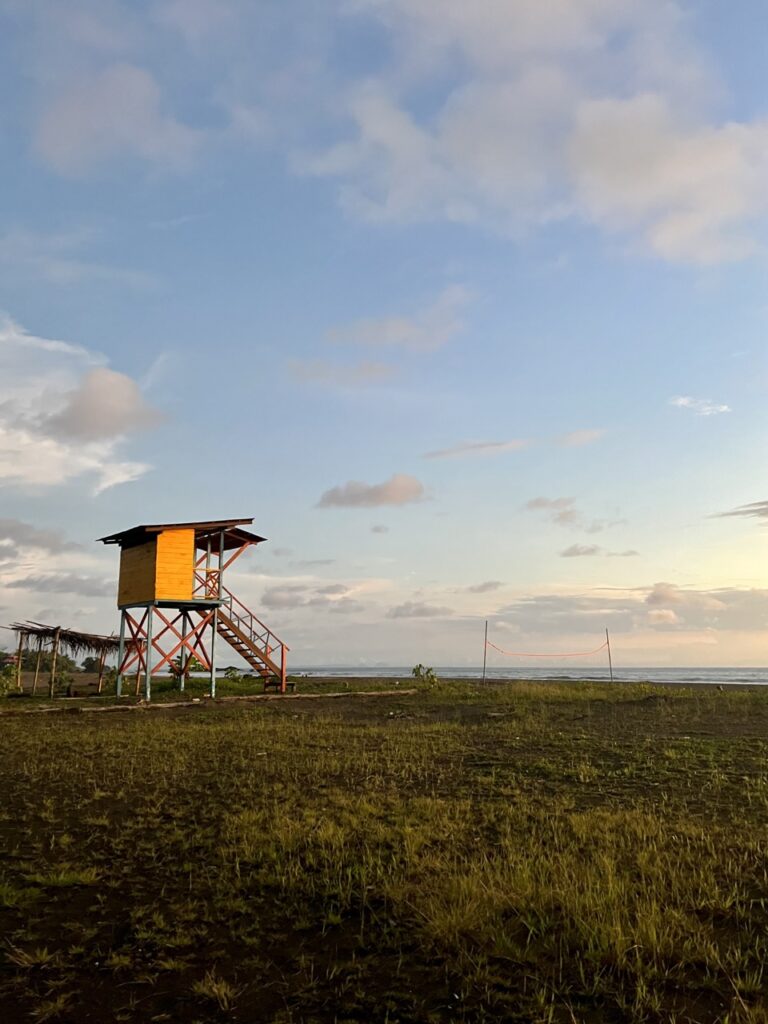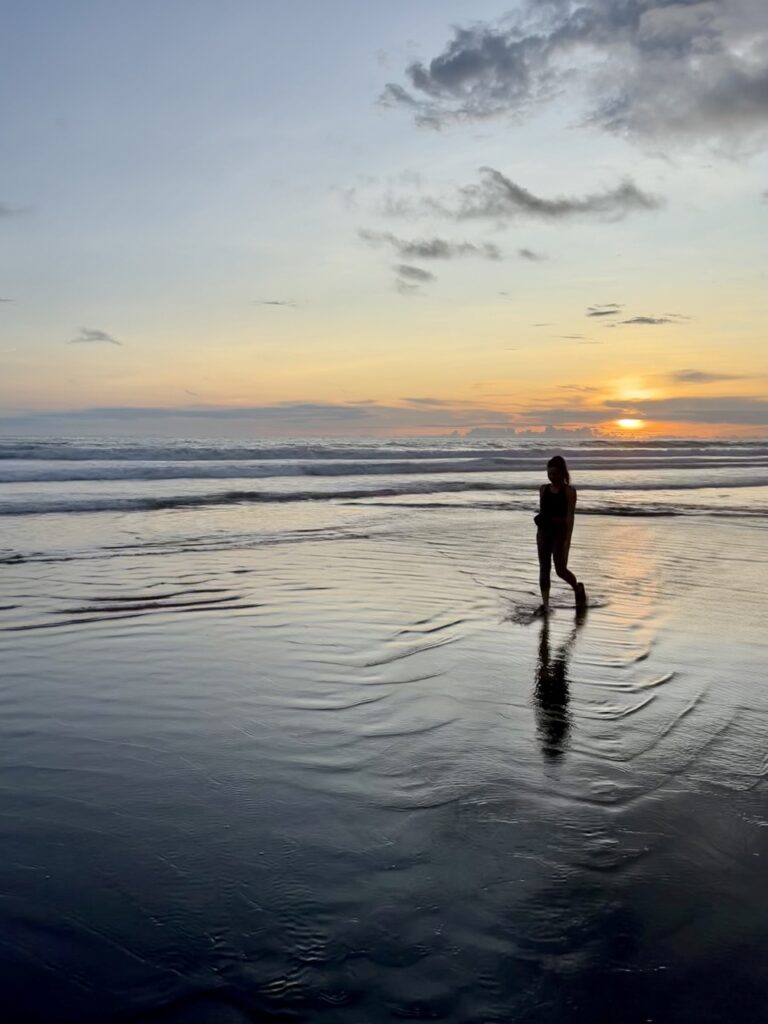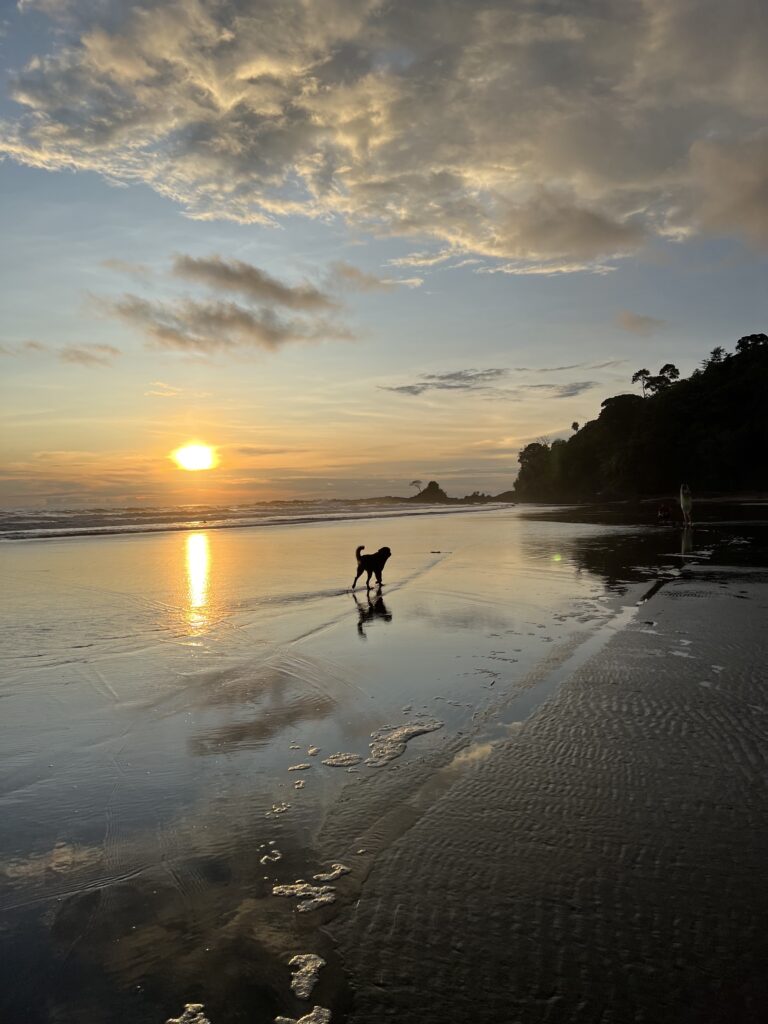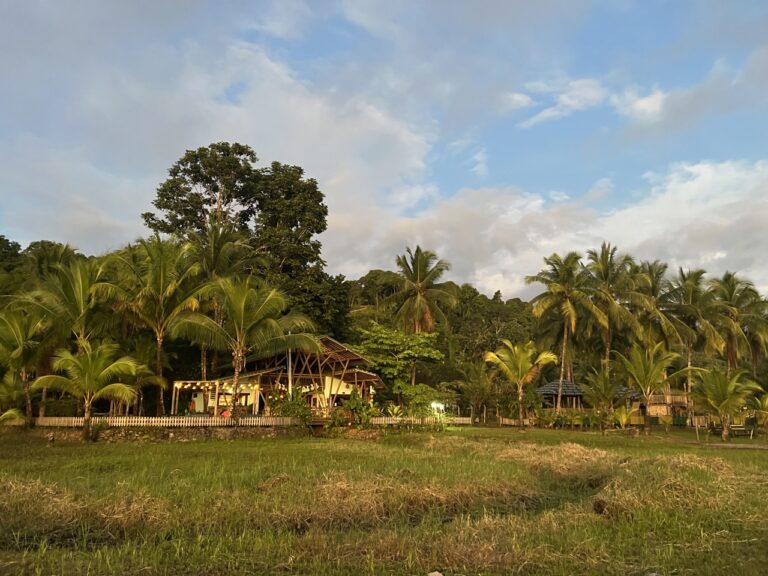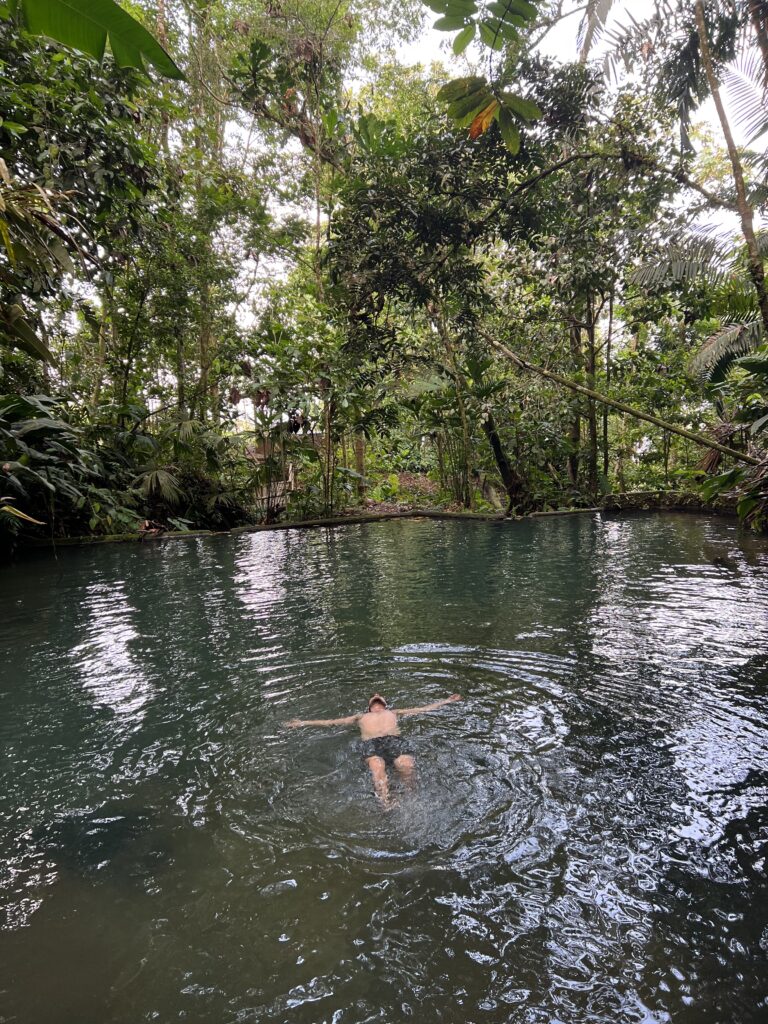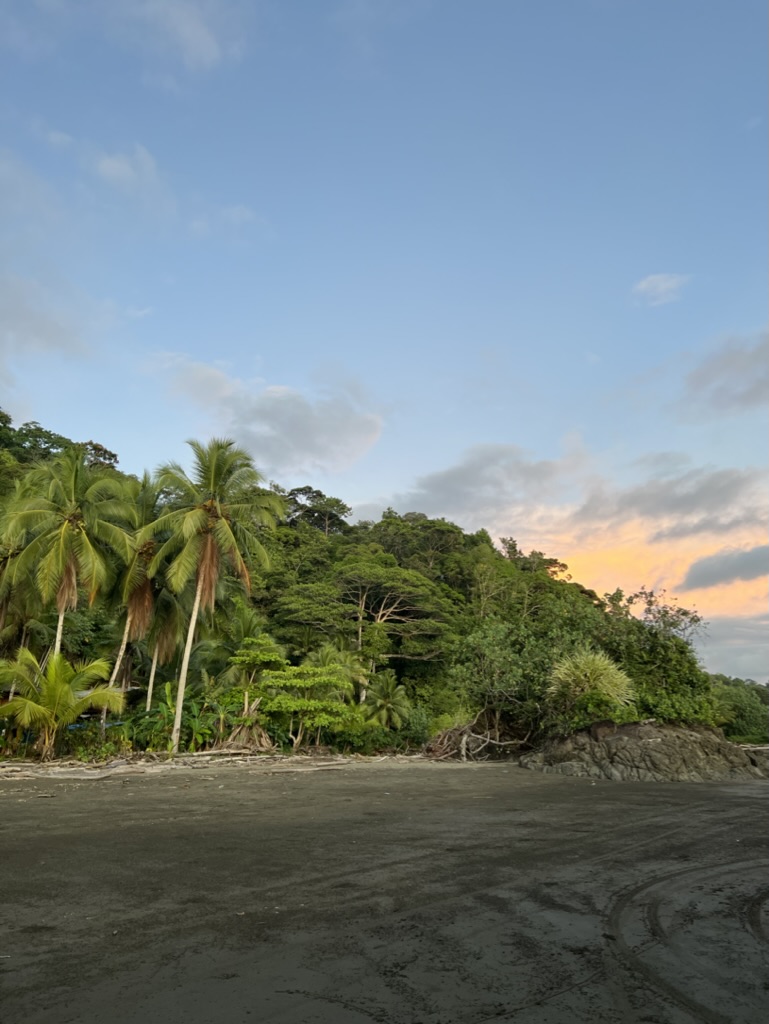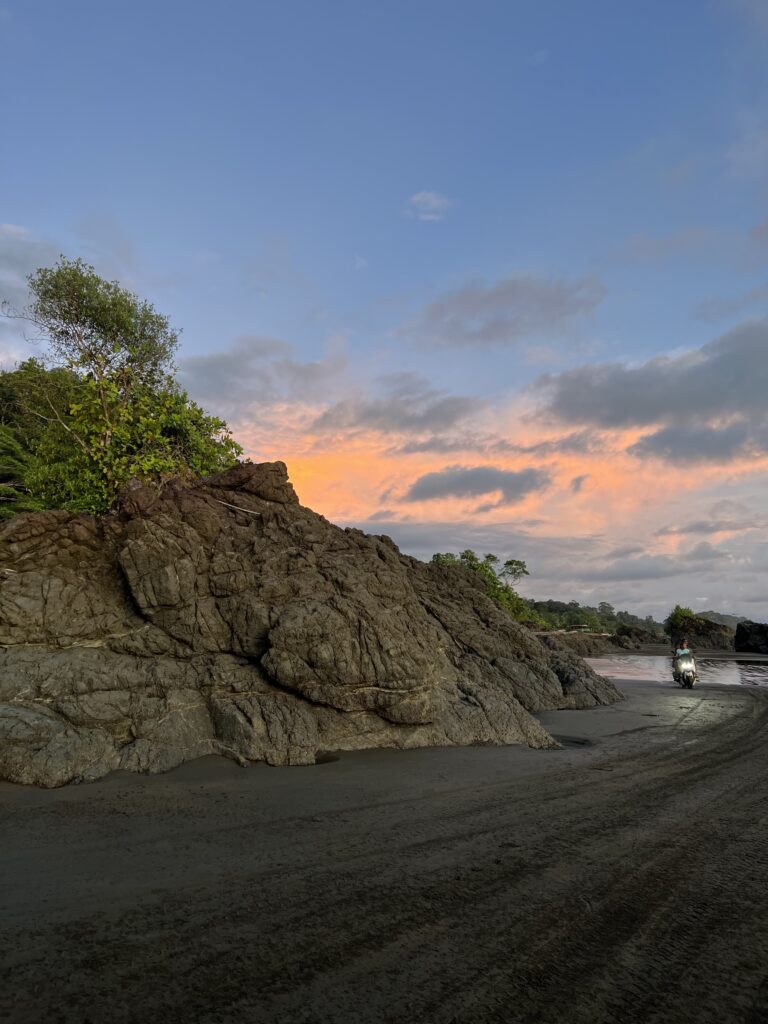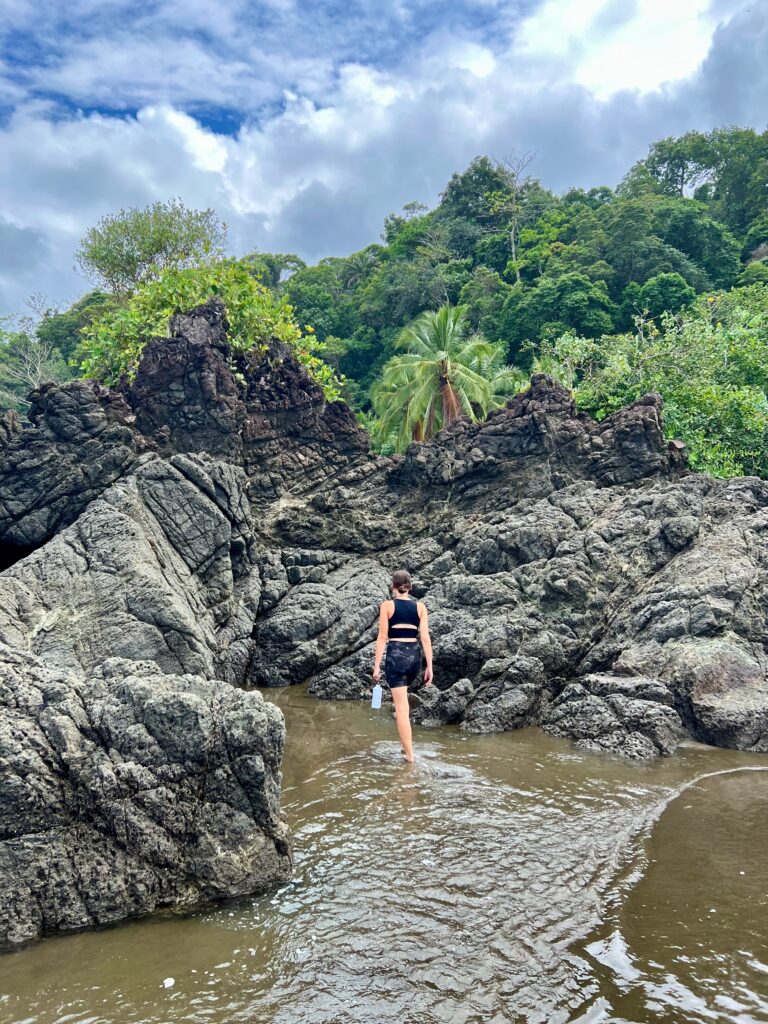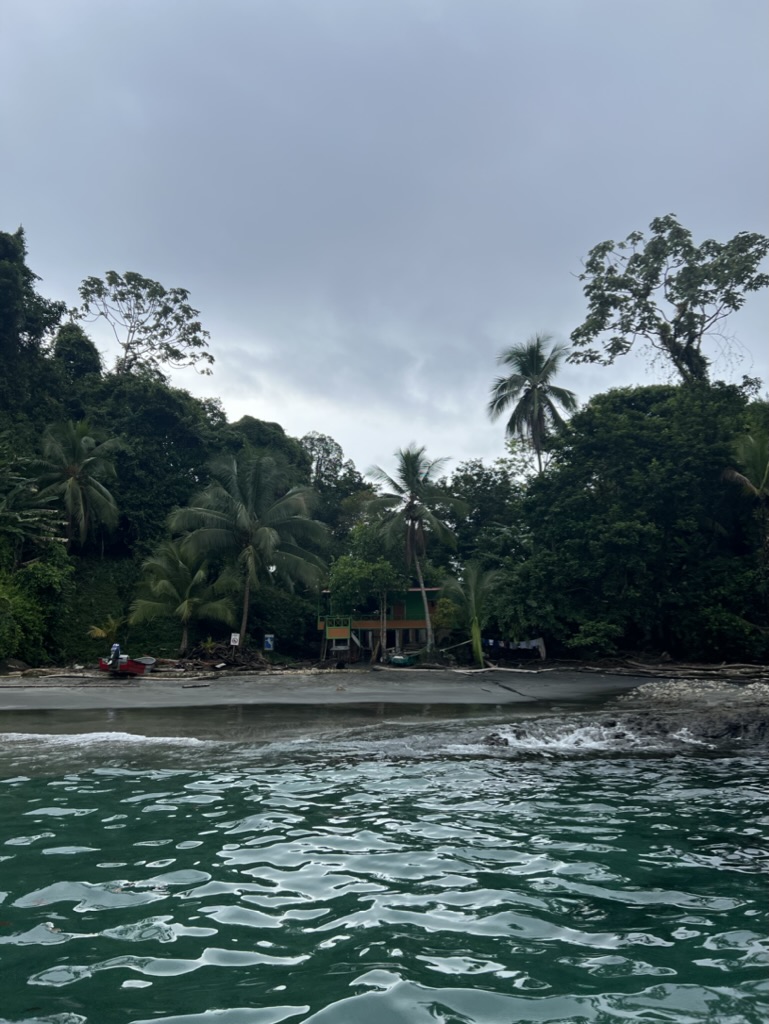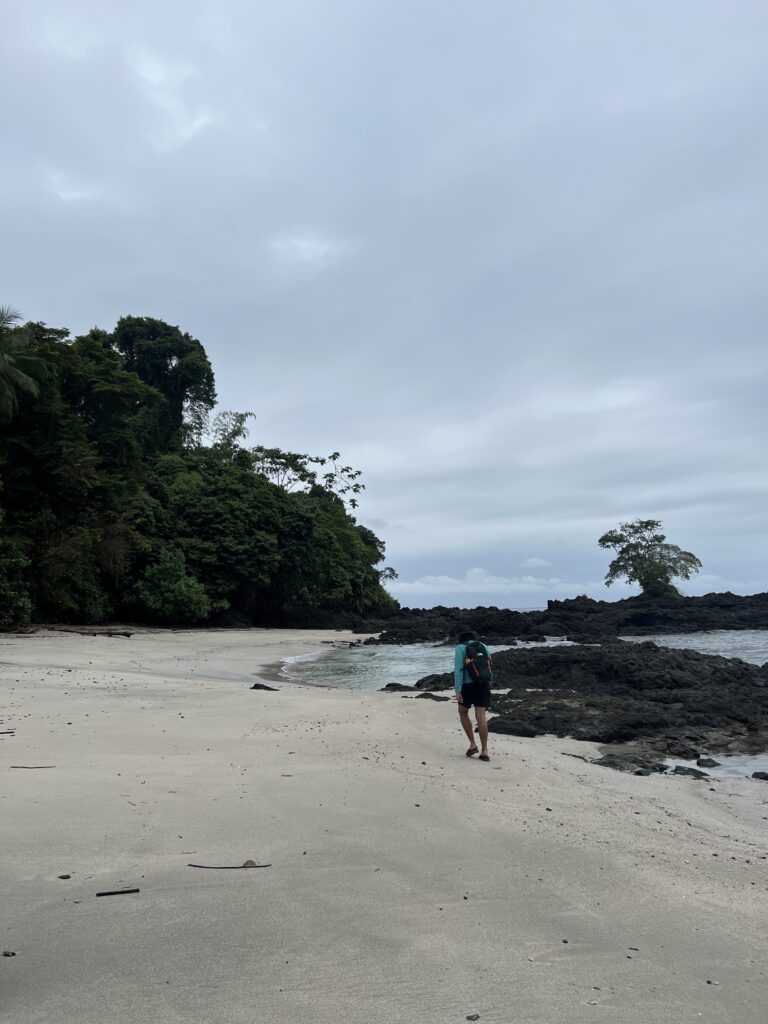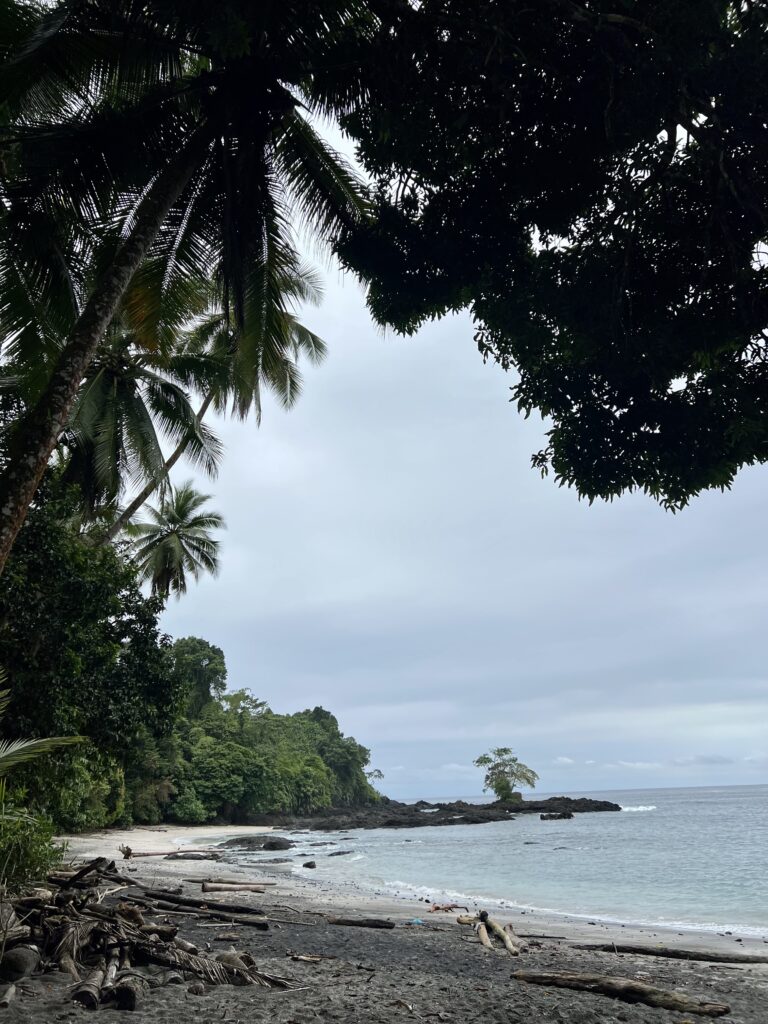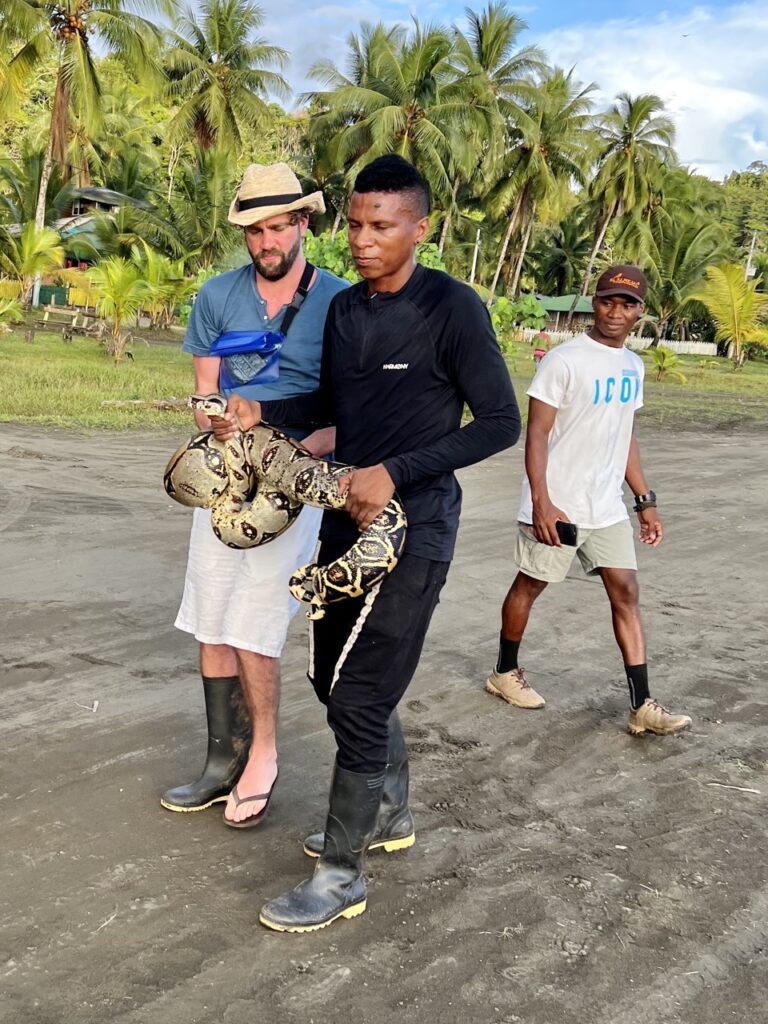El Pacífico
El Pacífico – the pacific coast of Colombia. Only a 1 hour flight from Medellín, however separated by dense jungle, this coastal region feels worlds away. The vibe can be described as off-the-grid, jurassic park, meets eco resort. This is a destination foreign to even many Colombians. It’s an adventure from the arrival at the airport, which makes standard bus terminals seem “high tech”, to the diversity of wildlife, and opportunity to truly disconnect. Well worth a few days to explore life on the pacific coast which is slow, grounded, and authentic.
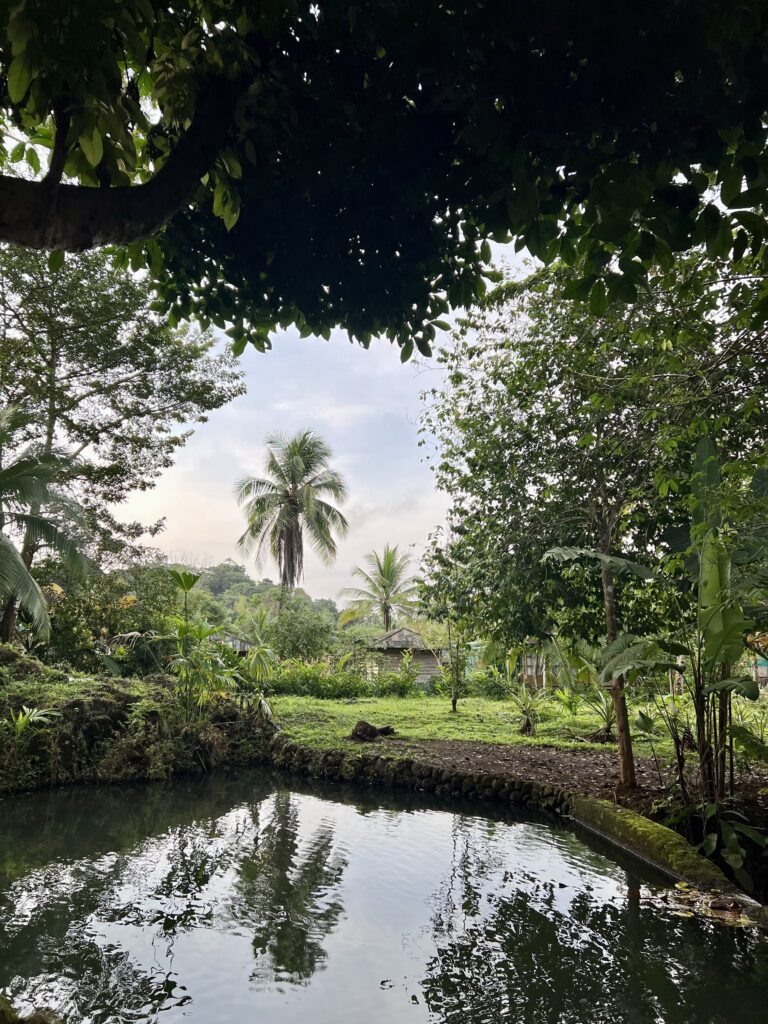
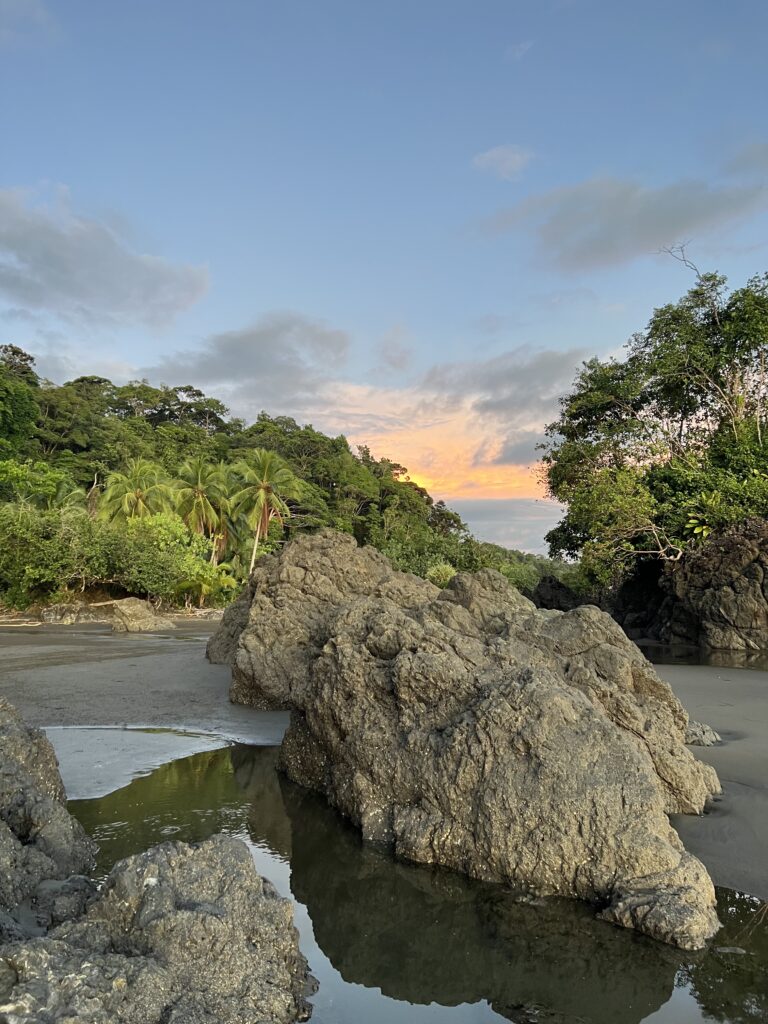
Activities
- Scuba Diving
- Snorkeling
- Surfing
- Utría National Park
- Playa Blanca
- Hot Springs
- El Almejal Nature Reserve
- El Tigre Waterfall
- Night Jungle Tour
- Explore the town
- Whale watching if in season (June – October)
- Sea Turtle Hatching (September – November)
- River Tours
Where to stay

Bahía Solano: 45 minutes from the Bahía Solano airport there is a black sand beach called El Almejal. This is where I chose to stay. It’s walkable to the small local town of El Valle, yet still considered Bahía Solano. The beach is beautifully rustic, with an impressive array of rocks and boulders at the edge of a rainforest. It’s not your typical manicured beach and a pleasant change from the monotony which can happen with extended travel. This place is without a doubt special.
- El Almejal Eco Resort: I highly recommend if it’s in the budget. There is no dorm option but rather small bungalow type rooms with porches, hammocks, and a private bathroom. It’s basic but perfectly fitting for the environment. We split our time between El Almejal and an Airbnb essentially next door to the eco resort. Just be aware that El Almejal has a package that is best utilized if you’re staying 4 days. The concierge can help you plan any activity that you may be interested in. They even have their own nature reserve with a deck overlooking fresh water lagoons, perfect for yoga or a dip a natural pool.
- Hostels: The Pelican House, The Humpback Turtle, or Utría Hostel. These are all within walking distance from each other.
- Airbnb: There are a few airbnb options on the beach. Ours was a little cabin, tree house-esque. Again, basic, but had everything we needed. A kitchen, bedroom, bathroom, and even somewhat functioning TV when we had power. The manager was very helpful in arranging a tour of Utria for us and transportation to the airport.
Nuquí – Especially popular for those looking to scuba dive. Guachelito is a popular beach to stay at ~30 minute boat ride
Utría: Somewhere in between Bahía Solano and Nuquí lies Utría National Park. We visited during a tour which covered a boat ride from El Valle passing sharks actively enjoying their breakfast, a stop at the pristine playa blanca for snorkeling, hot springs, and tour through the protective mangroves of Utría. While there, we passed what seem to be accommodations right in Utría National Park, so I believe you could stay in this protective area if desired.
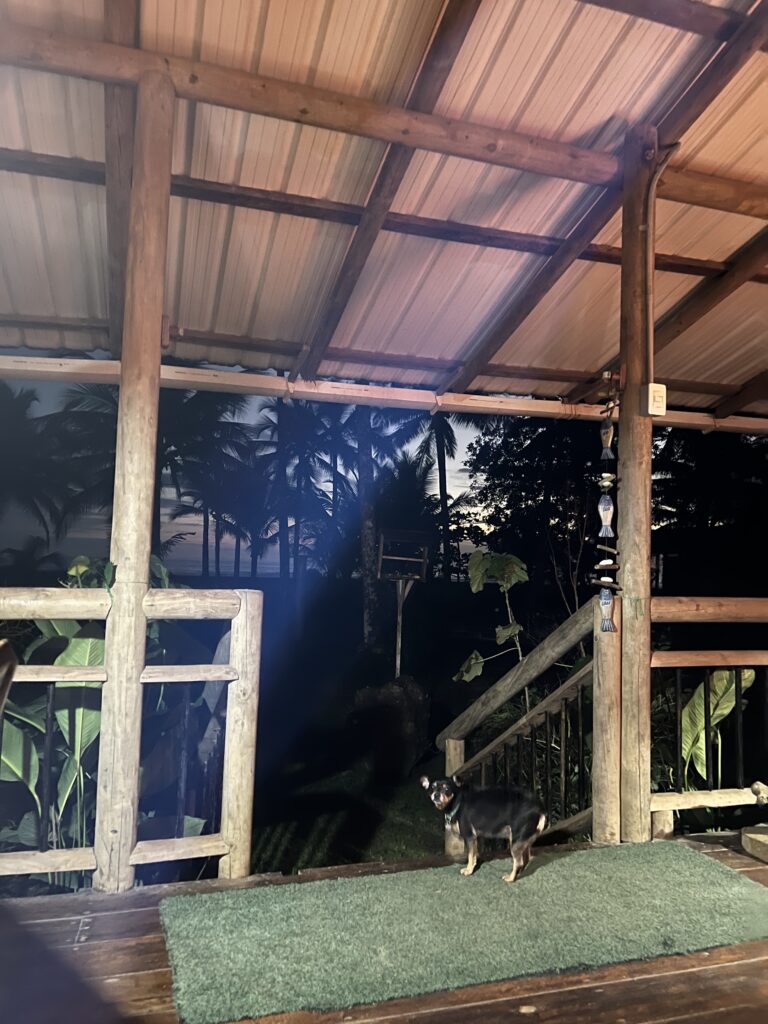
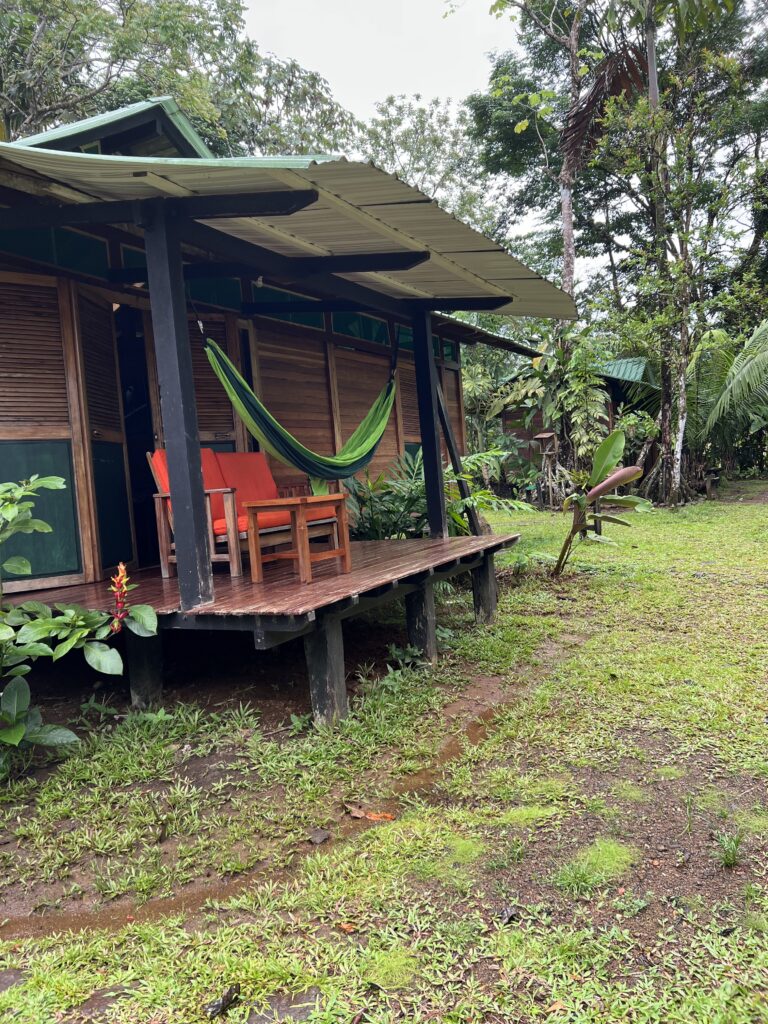
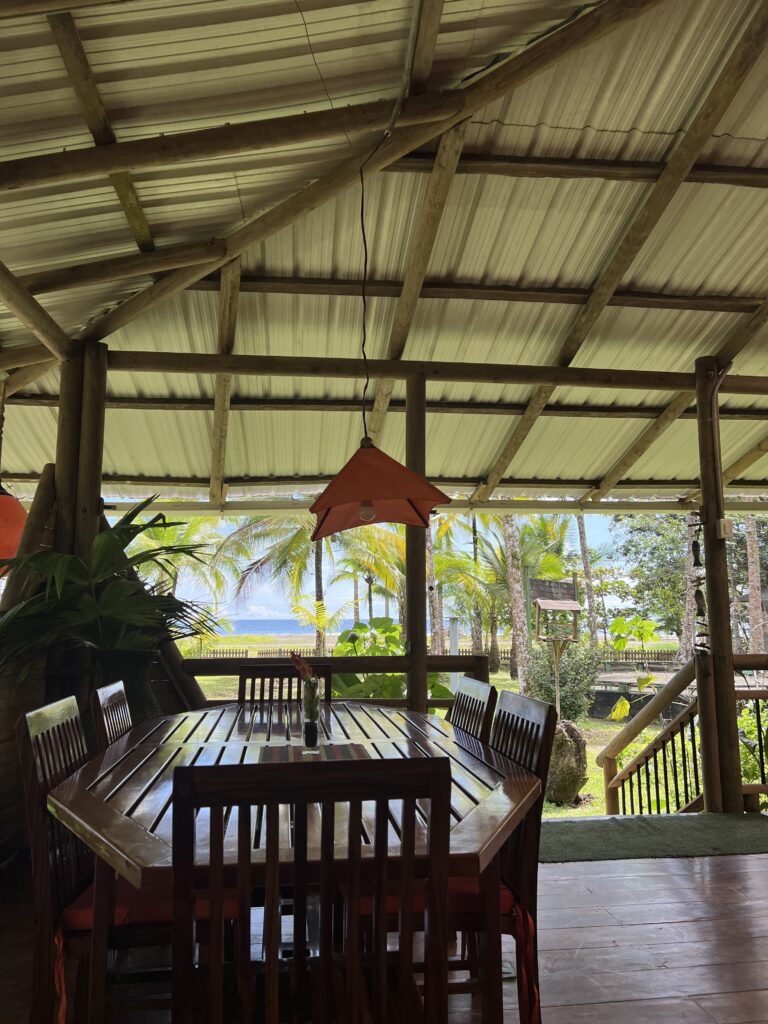


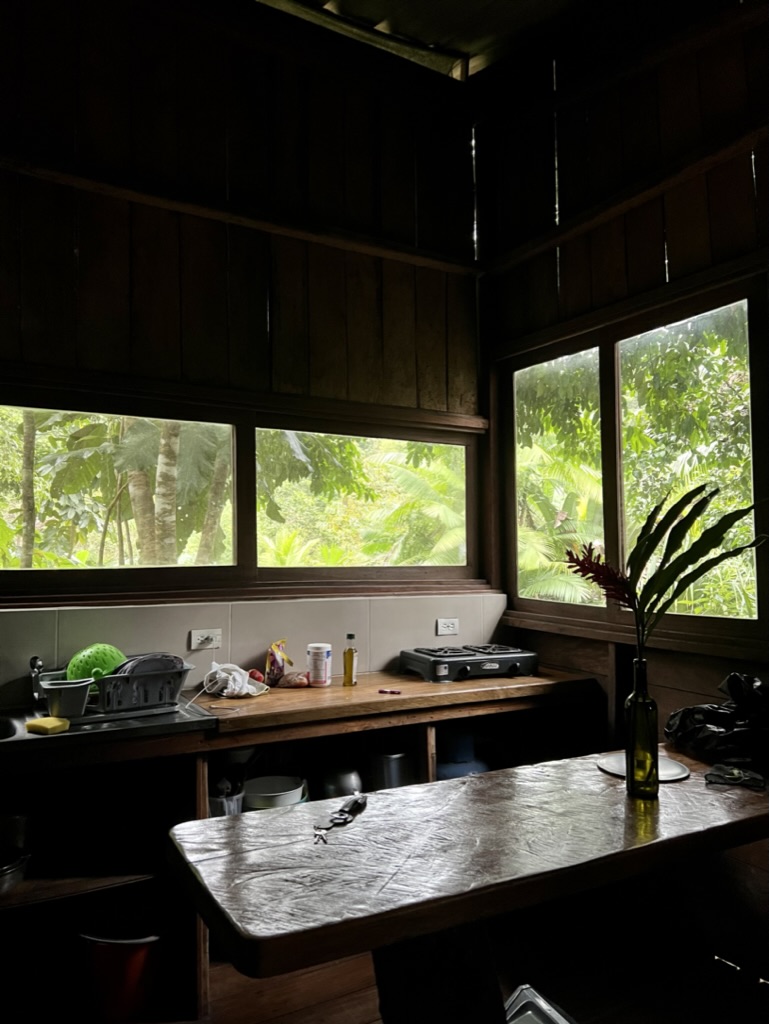
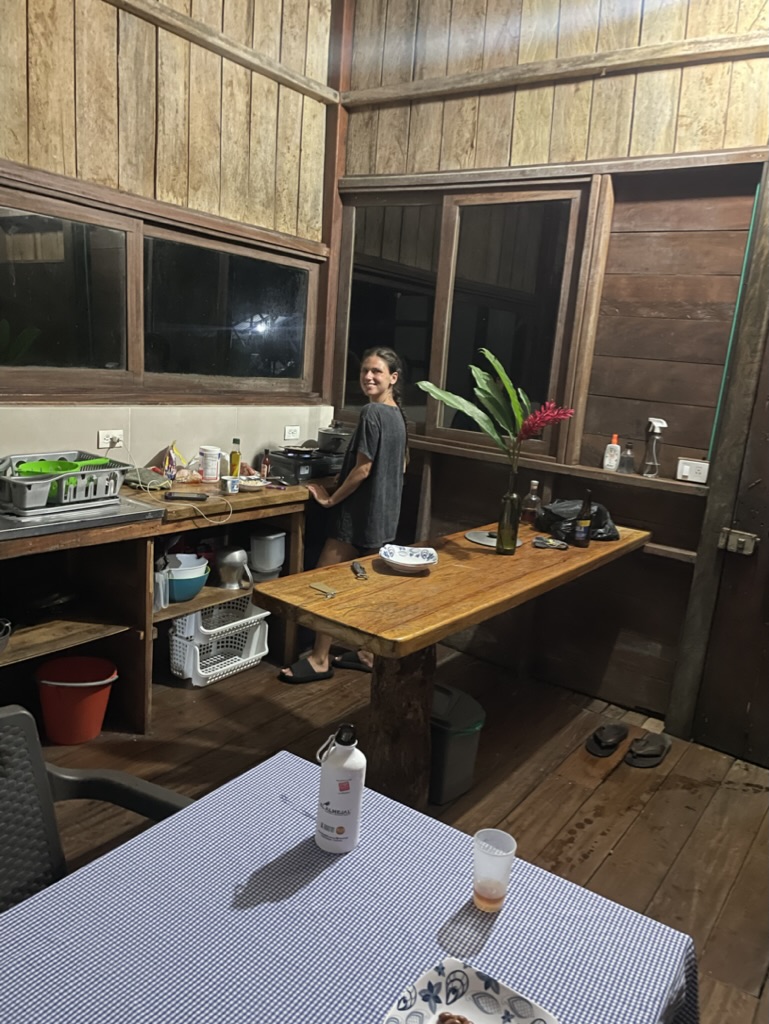
Where to Eat
Restaurant in town (El Valle): Restaurante Delicias del Pacifico
The benefit of staying at an ecolodge such as El Almejal is that meals were included in the package. The restaurant was great and they accommodate to dietary restrictions. Portions were large and filling. If you’re staying at another property, you can also come to El Almejal for the restaurant. My advice would be to drop by earlier in the day to let the front desk know that you’re interested as they do have limited hours of operation.
Our airbnb came with the option of hiring the manager who is a lovely women from the area to cook for you. I would assume that this service would be well worth it, especially for groups, because she knows the best places to source the food.
The hostels also have small bars and restaurants, again, give them a heads up that you’re coming as menus tend to be limited to “the dish of the day” or “veg/non veg option”, and serving hours are limited.
Playa Blanca: There is one restaurant on playa blanca. They’ll have a meal of the day, just let them know if you have restrictions and they’ll accommodate the best they can. They also sell some snacks and beverages. It’s really the only option while you’re there since it’s a small island.
Groceries: There are small markets with canned and packaged products, but remember that everything has to be imported via airplane so groceries tend to be a bit more expensive and options aren’t plentiful. The fresh produce seemed to be a little hit or miss as well. We walked from El Almejal beach to town which takes about 15-20 minutes then hired a tuk tuk back since we were carrying groceries and bottles of water. Meals that we cooked were basic but was a nice change to the heavier three course meals that we were eating at the hotel.
*Pictured below – meals of a vegetarian. Those who eat fish will surely have more options. My friend who I was with loved the fish which was served
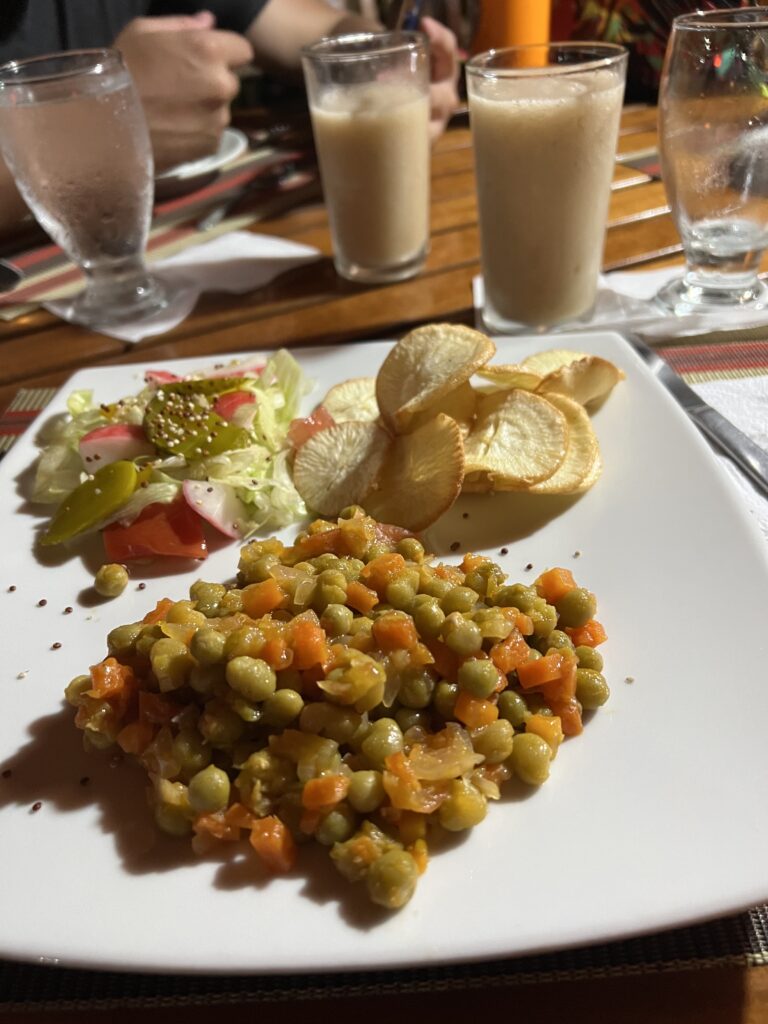

How to get there
Flights are direct from Medellín. Remember there are two airports. Likely you will find a flight with SATENA or EasyFly, leaving from the small airport in Medellín which is much closer to the city center than the larger international airport. Flights are limited though so this is something that you may want to book ahead and before you make a concrete itinerary. Since there are limited flights in and out of the area, tuk tuks and colectivo vans will be waiting to take you to your accommodations. Hotels, hostels, and airbnbs can also help you arrange for pick ups and drop offs.
What to expect
Weather: Weather in this region can be intense. With a rainy season of about 9 months out of the year, chances are, it’s going to rain. Apparently one of the “rainiest” regions in the world. September and October are the driest months. My experience was sunny, hot, relatively humid mornings, a few showers in the afternoon, and storms at night. It was quite the experience to be staying in essentially a tree house during a thunderstorm. But don’t let rain discourage you. There was plenty of time to explore and the rain was even peaceful at times. After all, you can’t expect such lush forests without a little water, right?
People: Geographically, the pacific coast is relatively isolated from the rest of the country. Only accessible by boat or plane. The people of the region, mostly Afro-Colombians and indigenous, live a lifestyle authentic to their culture. They are kind, welcoming, vibrant people. Life is laidback and full of music, singing, and dancing. The accent is unique to other parts of Colombia, and I found it a bit challenging to understand, but everyone was patient and happy to have tourism.
Infrastructure: limited but livable. Showers may not be hot, air conditioning non existent, even electricity isn’t guaranteed – especially during a storm. But it’s all part of the experience. If you wanted a 5 star resort, you could find that in Cartagena. What is lacking in amenities is certainly made up for with an impressive conservation of mother nature and a truly unique experience.
Food: When it comes to food, there are options, but it does take a bit of effort, planning, and flexibility. Staple foods in this region include fish, a lot of fish for obvious reasons. Dishes that I ate, as a non fish eater were coconut rice, cooked vegetables, patacones, and lentils. If you eat eggs and cheese, they are also widely available.
Wifi: Most restaurants and accommodations will not have wifi or it will be limited. El Almejal eco lodge for instance did not have any available wifi for guests. However, there is cell service if you have a Colombian SIM card. But definitely don’t rely on it.
Safety: Historically, this region has been known for drug trafficking and unconventional practices of indigenous groups as is the case with many isolated groups of people who are met with the challenge of mixing with the modern day world, not to mention tourism. That being said, Bahía Solano, El Valle, Nuqui, and any guided tour in between is safe. Tourism is important to their economy and I never felt in danger.
Cash: There is no ATM from my understanding, bring plenty of cash.
If staying in Medellín, read my guide click here.
